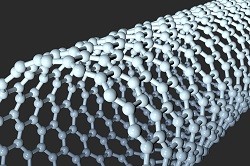Hybridising silicon devices with carbon nanotubes
Silicon has positioned itself as the material of choice for a range of photonic applications, including DataCom and sensing. As a result, today you can find numerous photonic devices capable of emitting, propagating, modulating and detecting light at the silicon chip-scale. Yet even with this advancement, there remains the challenge of integrating all the photonic building blocks onto the same circuit. This is because doing so requires integrating a range of different materials onto silicon. Although technically possible, the process is not cost-effective, thus limiting the use of silicon photonics for a broad range of applications. The EU-funded CARTOON project overcame this challenge by developing a new strategy for hybridising silicon based devices that uses carbon nanotubes (CNT) as an integrated light source, modulator and detector in the near infrared wavelength range. ‘We ultimately selected semiconducting single wall carbon nanotubes (s-SWNT) as it is a very versatile material that also offers very good electronic and optical properties,’ says Project Coordinator Laurent Vivien. According to Vivien, the advantages of s-SWNT are many. For example, it displays strong room temperature emission in the NIR wavelength range, as well as strong thermal photo-stability. By selecting a precise nanotube diameter and chirality, one can easily control emissions for wavelengths from 1m to 1.6m. They can be integrated to make diodes and field effect transistors, thus opening the possibility of using electrical pumping for luminescence and photo detectors. Furthermore, their electronic transitions, via predicted Stark and Kerr effects, can also be used to obtain modulation effects. ‘For all these reasons, CNT is a very good candidate for solving the integration issues of silicon photonics, leading to a cost-effective and reliable photonics,’ says Vivien. Huge potential Producing a range of important breakthroughs that have paved the way for the development of next generation CNT photonics, the potential impact of the CARTOON project is huge. For example, it developed new strategies for achieving pure semiconducting carbon nanotubes for photonic applications. It also conducted the first successful demonstration of negative refractive nonlinear effect in CNT integrated in a silicon nitride waveguide, along with the first lasting effect based on the hybrid integration of CNT into silicon photonics devices. Furthermore, the project produced a hybrid, fully integrated silicon photonics platform for nanomaterials and optimised for nanotubes. ‘The project introduced a new, unexpected concept for the use of CNT for silicon photonic applications,’ says Vivien. ‘It is a very promising material that could be used in developing all optoelectronic devices, and we’re confident that CNT will facilitate the integration of photonics and electronics. In addition, as single CNT are quantum emitters, our strategy can also be used for driving silicon photonics in the realm of integrated quantum communication.’ Marketisation on the horizon In 2015, a new company, ProNT GmbH, was founded by a CARTOON project researcher. Its aim is to commercialise the technology for the direct synthesis of semiconducting SWNTs using some of the approaches developed during the CARTOON project. If successful, this will provide industrial customers with s-SWNTs for integration into SWNT-based photonic and electronic devices, including sensors. CARTOON project researchers also plan to build on their latest findings about optoelectronic devices with the launch of a new project. The focus of this new research will be on demonstrating a CNT-based silicon photonics circuit for use with next generation optical interconnects, quantum information and sensing.







